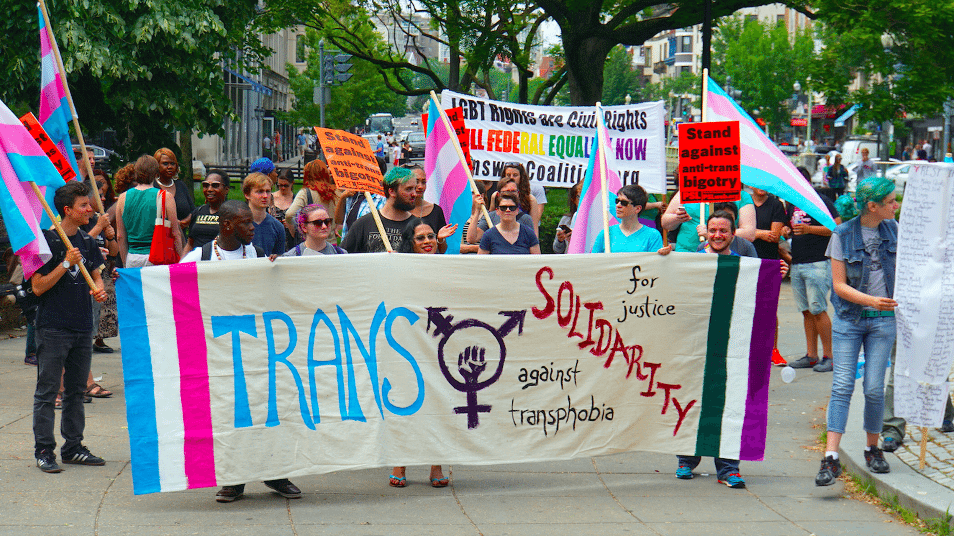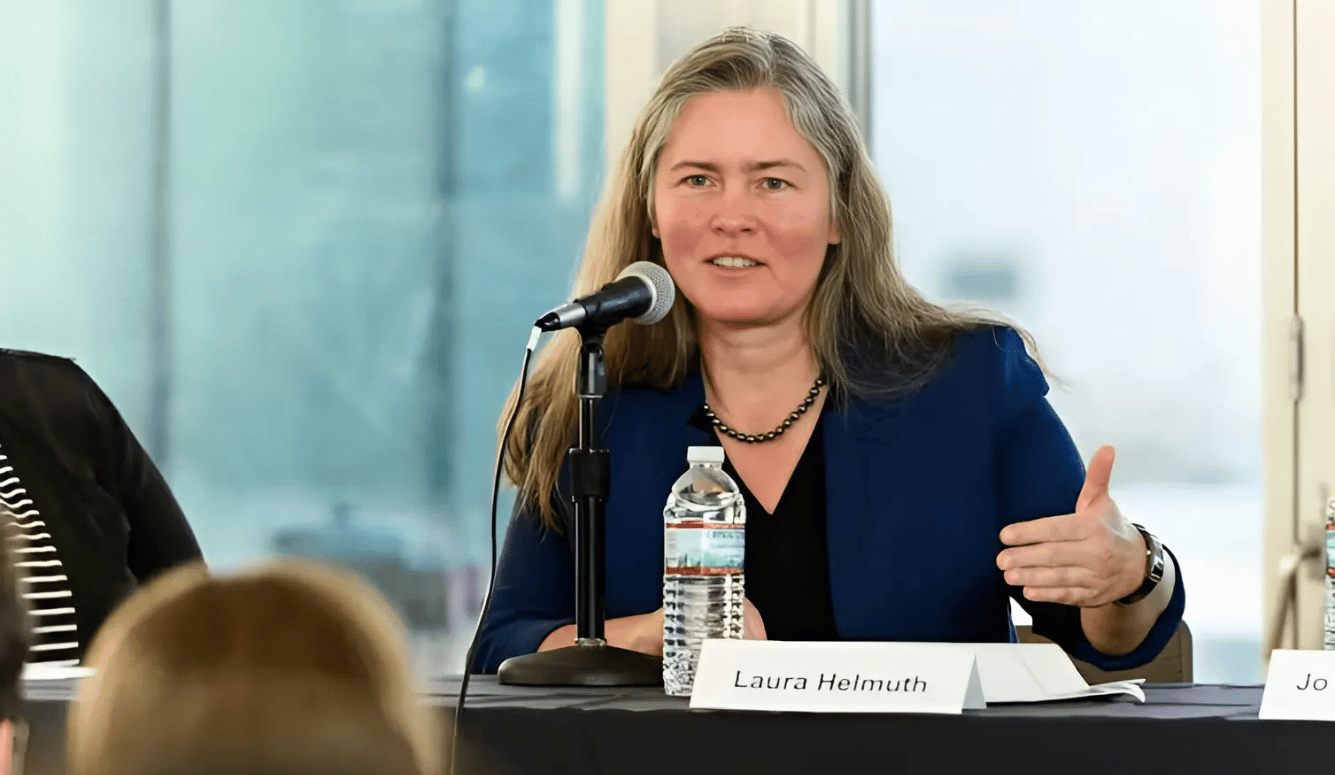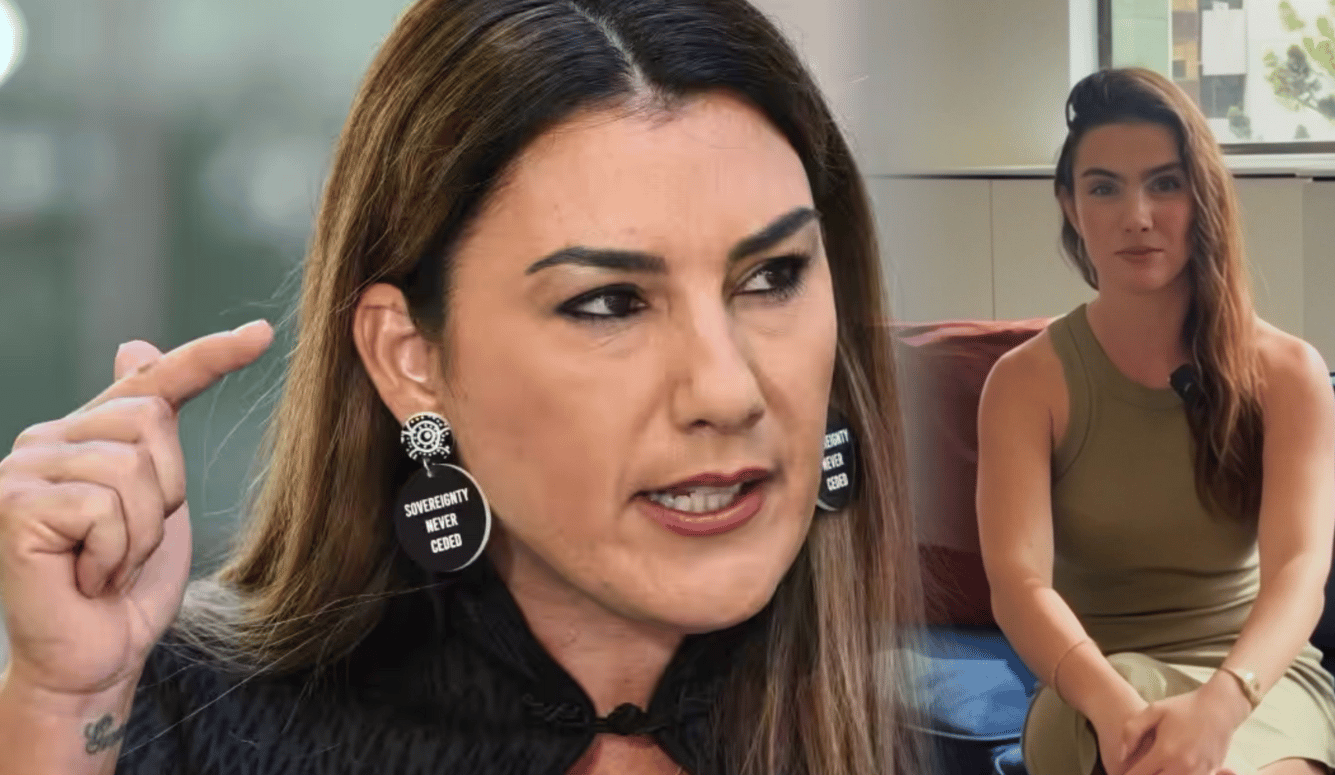Not My Rights Movement
If this rate of letter propagation continues, we’ll soon have an acronym that spans several lines and will be worth well over two thousand points in Scrabble.

Currently, LGBTIQCAPGNGFNBA is believed to be the world’s longest acronym used to describe human sexual orientations and gender identities. Chances are it’s already been surpassed by an even longer acronym with the self-discovery of yet another person, or group of persons, with a unique gender fixation. It’s probably pointless to try to memorize what all the letters stand for, because theoretically there’s no limit to the proliferation of sexual identities. But some of them come with unique pronouns, and you had better learn those. Otherwise you might run afoul of new federal and provincial human rights and hate crimes laws.
How on earth did we get here?
Well, in the beginning there was G. And it was good. I’m not talking about God but about Gays. Back in the early 1980s, I joined the fight for gay rights and marched in the Toronto Gay Pride parade. Before G, there was actually H, for Homophile, as in the Queen’s (University) Homophile Association, which I discovered in 1978. I have to admit I welcomed the change from H to G.
It didn’t take long before Lesbians decided they had to have their own letter. I always thought that G could have covered them. But they were insistent and Gay Pride morphed into Gay and Lesbian Pride. Before long we realized, with almost no debate, that we couldn’t leave out bisexuals, and so we became the LGB community.
LGB was no ordinary acronym. It had an electromagnetic charge and began attracting other letters. Soon it became LGBT, with the T standing for Transgender/Transsexual. LGBT then added a Q for queer. I still don’t understand the difference between a queer person and a gay person, but apparently some queers do. And one good Q obviously deserves another, so Q for questioning was added to make it LGBTQQ, or LGBTQ? for those who prefer punctuation over repetition.
At this point there was some serious momentum. The next addition was the letter I for intersex – people born with indeterminate genitalia, an exceedingly small percentage of the population. Race broke into the line-up with the addition of 2, meaning two-spirit in reference to First Nations people who have both a feminine and a masculine spirit. Other letters that have been added include U for unsure, C for curious, P for polyamorous, F for flexual, A for asexual, and so on and so forth.
LGBTIQCAPGNGFNBA…and counting
But since there is no internationally-recognized sex and gender identity standards committee in Geneva – yet – there has been disagreement on which letter(s) belong in the LGBTetc alphabet. Peter Tatchell, a long-time gay rights activist in the U.K. and as much an authority on the subject as there is, says LGBTIQCAPGNGFNBA is the longest acronym he’s seen. At Wesleyan University they have a residence called Open House which they bill as a safe space for LGBTTQQFAGPBDSM. Pride Toronto has long used LGBTTIQQ2SA.
If this rate of letter propagation continues, we’ll soon have an acronym that spans several lines and will be worth well over two thousand points in Scrabble. Forget about it being featured on Wheel of Fortune.
The main reason for this silliness is the letter T for Transsexual/Transgender. This letter is radioactive and is emitting more and more ‘gender’ identities in a chain reaction that might never stop. Most of the letters in the LGBT+ acronym are not related to sexual activity but to sex identity which subdivides almost daily.
So what exactly is this community?
Well, when I was growing up the T stood for two kinds of people: transsexuals – people who believe they are in the wrong body and who want to change their sex through hormones and surgery; and transvestites, mostly straight men who wanted to wear women’s clothes, but also gay drag queens like the late great Canadian Craig Russell who so entertained us in bars and movies.
But T now also refers to Transgender people, or Trans, as they prefer. They insist gender is a social construct and that they are not part of the traditional binary male/female split of the population.
Gender dysphoria or gender identity disorder affects a very small number of people. Estimates range from 0.1-0.5 percent of the population. If you only consider transsexuals who medically transition from one sex to another, you’re at the extreme lower end of that estimate. The latest data from the U.K. suggests that 20 in 100,000 are transsexual. But the transgender population seems to be significantly larger than that, and growing. It includes an increasing number of children who are convinced, perhaps partly by the ubiquity of the phenomenon in popular culture, that they are growing up in the wrong bodies.
Referrals to gender dysphoria clinics are skyrocketing. The British Guardian newspaper recently reported that “a clinic in Nottingham reported a 28-fold increase in referrals in eight years, from 30 in 2008 to 850 in 2015. It is expected to increase to more than 1,000 referrals in 2016.” Edmonton psychiatrist Lorne Warneke, who has been helping people transition for decades, told the CBC in October that he’s seeing more and younger trans patients than ever before. The internet is awash in videos where trans adolescents tell their stories of transitioning.
Activists are pushing the medical community to offer treatment at earlier and earlier ages. It is not uncommon to start patients on hormone blockers around age 13 to delay puberty, then prescribe cross-sex hormones at age 16, so the child is ready for surgical transition at age 18.
Dr. Frankenstein as pediatrician
There is very little data on the long term effects of hormone blockers but what there is indicates that these drugs may stunt growth and affect bone density. One of the drugs, Lupron, which is manufactured by the U.S. pharmaceutical giant AbbVie, is intended for treating endometriosis and uterine fibroids. AbbVie has never tested Lupron for blocking puberty and has no plans to do so. Adverse events in clinical studies of females included “hot flashes, headaches, emotional lability (uncontrollable laughing or crying), decreased libido, acne, myalgia, reduction in breast size, and vaginal dryness.”
The American College of Pediatricians reports that “puberty-blocking hormones induce a state of disease – the absence of puberty – and inhibit growth and fertility in a previously biologically healthy child.” Dr. Lisa Brinkman, a clinical psychologist in Ireland told the Irish Examiner that “cross-sex hormones have irreversible effects on fertility. There’s no going back.”
That’s just the puberty blockers. Cross-sex hormones also have not been studied for their use in adolescents. Dr. Lisa Simons, a pediatrician at Lurie Children’s Hospital in Chicago, told the Frontline show on PBS that “we don’t really know how sex hormones impact any adolescent’s brain development,” adding that there are no “specific studies that look at the neurocognitive effects of puberty blockers.” What is known is that some of the physiological changes caused by cross-sex hormones cannot be undone if a child decides to revert back to their original sex.
However many people start the process, few people actually go forward to surgery. According to the Encyclopedia of Surgery, somewhere between 100 and 500 gender reassignment procedures are conducted in the United States each year. The U.K. reported 143 surgeries in 2009. A Swedish study found that fewer than 700 people had surgically transitioned over a 50 year period ending in 2010. Numbers for Canada are hard to find, although a handful of doctors across Canada specialize in the procedures, and almost all provincial healthcare programs pay for it. Last year the Ontario government moved to make transitioning easier to obtain, citing a wait list of 1,000.
Trans advocates argue that long wait times cause some people to commit suicide. But there is also some evidence the cure is as bad or worse than the disease. John Hopkins University, one of the first places to perform sex reassignment surgery, stopped when they found it made little difference to the mental health of those who went through with the surgery compared to those who didn’t. Paul McHugh, a former psychiatrist at Johns Hopkins, said that “producing a ‘satisfied’ but still troubled patient seemed an inadequate reason for surgically amputating normal organs.”
Writing in the Wall St. Journal, McHugh also cited a Swedish study that followed 324 people who had sex reassignment surgery for up to 30 years. “The study revealed that beginning about 10 years after having the surgery; the transgendered began to experience increasing mental difficulties. Most shockingly, their suicide mortality rose almost 20-fold above the comparable nontransgender population.”
Of course, surgery doesn’t alter the chromosomes in the human body’s 3.7 trillion cells. So, the removal and replacement of genitalia and other external gender characteristics is really just extreme cosmetic surgery. This is not to say that sex reassignment surgery should never be done, just that it should be extremely rare and that people should know all the risks; just as parents should know all the risks of giving their children hormone blockers and cross-sex hormones.
The Diagnostic and Statistical Manual of Mental Disorders (DSM-V) states that “rates of persistence of gender dysphoria from childhood into adolescence or adulthood vary. In natal males, persistence has ranged from 2.2 percent to 30 percent. In natal females, persistence has ranged from 12 percent to 50 percent.” In other words, of the tiny fraction of children who experience gender dysphoria, most end up accepting their original sex.
Science steamrollered by politics
OK, but how about the other, apparently much larger part of the Trans community – those who forgo medication or surgery but who, nonetheless, reject their in-born biological sex. This is where science leaves the room for politics. Advocates for this constituency view gender as a social construct, not as something that is biologically determined. Their demands for legal rights and protections and social accommodations are not rooted in immutable physiological characteristics but in how they feel about themselves. But they are no less eligible, in their minds, for protection from anything that could hurt those feelings.
Their first fight was over bathrooms – either the right to use bathrooms of their choice or for dedicated toilets for the transgendered. Schools and other public institutions across North America are now scrambling to satisfy the demand.
But it doesn’t end with bathrooms. The Vancouver School Board passed a new policy in 2014 that says “where possible, students will be permitted to participate in any sex-segregated recreational and competitive athletic activities, in accordance with their gender identity.” This policy applies not only to playing fields but also to change rooms.
Needless to say this has caused some discomfort among the overwhelmingly majority of people whom we might call gender traditionalists. And in some places it’s causing a backlash against efforts to obtain legal rights and protections for mainstream gays and lesbians. The City of Houston, for example, last year voted down an anti-discrimination ordinance for LGBT, largely because of fears over trans rights and bathrooms. Springfield, Missouri repealed an LGBT anti-discrimination law in April 2015. And in March of 2016 the State of North Carolina passed a law preventing anti-discrimination laws by municipalities. In each case, so-called “transphobia” significantly influenced the outcome.
This has caused friction between the gay community and the trans community. In the former there is a growing call to “take the T out of LGBT”. In some ways the trans community is an affront to the gay community, such as encouraging children to be trans rather than accept being gay. Fundamentally these two movements have little in common – except that post-modern activists see them both as foils to subvert the values and institutions of western liberal democracy. For them the cause is secondary to the main purpose, which is revolution. As Andrew Sullivan has written, to the “liberationists” at the heart of the activist camp, politics is “almost always authoritarian…a strange confluence of political abdication and psychological violence.”
The lust to overthrow convention has reached new heights of ambition – and absurdity – in the Trans movement. It has succeeded in badgering New York City to recognize 31 different genders in its civic human rights code: Bi-Gendered, Cross-Dresser, Drag King, Drag Queen, Femme Queen, Female to Male, FTM, Gender Bender, Genderqueer, Male to Female, MTF, Non-Op, Hijra, Pangender, Transsexual/Transsexual, Trans Person, Woman, Man, Butch, Two-spirit, Trans, Agender, Third Sex, Gender Fluid, Non-binary Transgender, Adrogyne, Gender Gifted, Gender Blender, Femm, Person of Transgender Experience, Androgynous.
The dating app Tinder worked with the LGBT group GLAAD to add 37 genders to its website, and they have plans to continually update their current list: Agender, Androgyne, Androgynous, Bigender, Female to Male, FTM, Gender Fluid, Gender Nonconforming, Gender Questioning, Gender Variant, Genderqueer, Male to Female, MTF, Neither, Neutrois, Non-binary, Other, Pangender, Trans, Trans Man, Trans Woman, Transfeminine, Transgender, Transgender Female, Transgender Male, Transgender Person, Transgender Woman, Transmasculine, Transsexual, Transsexual Female, Transsexual Male, Transssexual Person, Transsexual Woman, Two-Spirit.
Neutrois is a “non-binary gender identity which is considered to be a neutral or null gender.” Genderfluid people feel they have different gender identities at different times. According to a Wiki definition offered by nonbinary.org, Pangender “is a non-binary gender experience which refers to a wide multiplicity of genders that can (or not) tend to the infinite (meaning that this experience can go beyond the current knowledge of genders). This experience can be either simultaneously or over time.”
No doubt it is difficult for some to decide if they are a Neutrois or a Pangender. This could open up a whole new sub-industry of psychotherapy for gender consultants. Or create opportunities for software developers to create an app that will enable users to determine their gender identity on a daily or even hourly basis.
But wait, there’s more!
Facebook offers a list of 58 genders and one web site (genderfluid support) has a master list of over 70 genders, including Aerogender – a gender that is shaped by your surroundings.
Here come the pronoun police
The federal government, many provinces, and some municipalities and school boards in Canada are introducing or strengthening regulations and legal protections for gender identities. The Ontario Human Rights Code, for one, protects “people from discrimination and harassment because of gender identity and gender expression.” It further decrees that “trans people should be recognized and treated as the gender they live,” and that “organizations should design or change their rules, practices and facilities to avoid negative effects on trans people.”
This includes the trans demand for everyone to use their invented pronouns. A Q&A on the OHRC site says that “refusing to refer to trans people by their chosen name and a personal pronoun that matches their gender identity, or purposely misgendering, will likely be discrimination when it takes place in a social arena covered by the Code, including employment, housing and services like education.”
And, just what are these pronouns? Well, to start: There is ne (nominative) /nem (objective) /nir (possessive determinant) /nirs (possessive pronoun) /nemself (reflexive). For instance, you could say that Ne laughed and that I called nem. Other sets include Ve/ver/vis/vis/verself; ey/em/eir/eirs/eirself; ze/zir/zir/zirs/zirself; Xe/xem/xyr/xyrs/xemself; tey/ter/tem/ters/terself.
If you are unsure of usage, there are many websites to guide the uninitiated through this minefield. And, if you won’t or can’t learn all the pronominal permutations, your may be accused of using oppressive language, which in turn could lead to an appearance in front of a human rights tribunal or a criminal charge under the hate crime law.
If you doubt it could go that far, consider this:
— Trans activists at the University of Massachusetts organized a ‘Sh*t In’ last month to protest lack of gender neutral bathrooms. They occupied bathrooms around the campus and vowed to stay until their demands were met. UMass already has over 200 single-stall gender neutral bathrooms and is currently building an additional 50. It’s not enough for activists who also want the hiring of a professor “who is an expert in the study of critical transmisogyny from an intersectional perspective.”
— Dawson College in Montreal opened their first two gender-neutral bathrooms in 2015 and the Dawson Student Union gave out #IllGoWithYou buttons. “The wearer of a I’ll Go With You button is a public volunteer, a buddy who can be counted upon to give peaceful support, act as a buffer, or speak up to any harassers in defense of the trans person’s right to use the restroom in peace,” the DSU explained, giving a whole new meaning to the phrase “bathroom buddies”.
— Continuing and Professional Learning at the Ontario Institute for Studies in Education (OISE) at the University of Toronto put on a webinar on “an introduction to gender-neutral pronouns for educators.” The seminar, taught by Lee Airton, a lecturer in the Masters of Teaching Program and the founder of They Is My Pronoun or TIMP, a blog about gender-neutral pronoun use. In an article for the Globe & Mail, Airton said that “I’ll be the first to admit that my pronoun can be silly sometimes, that it can cause confusion, prompting the need for clarification.”
— In November 2016, Jillian Bearden, a 36-year-old biological male (who now identifies as a transgender woman) won the women’s division of the El Tour de Tucson bike race in Arizona. In June 2016, a teenage male won a girls’ track meet in Alaska. And the International Olympic Committee ruled this year that transgender athletes can compete in their preferred gender category without having undergone sex reassignment surgery. (Men will have to be on female hormones though.)
— The Teacher Education for All! (TEFA) initiative at the University of British Columbia (UBC) will incorporate LGB/T2/Q inclusion into teacher education in the province. This will include workshops on Trans Literacies for faculty, staff and teacher candidates. Here is the bio of one of the workshop facilitators: “K, who uses the pronouns they/them, is a queer, non-binary second-generation Chinese settler raised in unceded Coast Salish territories, they put energies into QTBIPOC communities, writings, and activisms. They most recently facilitated a student directed seminar titled “Voices from the Margins: Critical Perspectives on Race, Sexuality, and Settler Colonialism” (GRSJ 425A), focusing on WOC and Indigenous feminisms, queer of colour and Two-Spirit critiques, and art-based activisms. Outside of school, K is aphotographer whose work is framed in community representation, accessibility, and social justice.”

Had enough?
Well, this is where Jordan Peterson comes in. As you will have read in other stories in this edition of C2C Journal or in countless stories about him in other media, Peterson is the University of Toronto psychiatry professor who is crusading against federal Bill C-16 which amends the Canadian Human Rights Act and the hate crimes section of the Criminal Code to include gender identity and gender expression to the list of prohibited grounds for discrimination and hate speech. He calls it nothing less than a Marxist authoritarian attempt to deny human biological reality and crush freedom of speech.
Peterson’s opponents call him paranoid and delusional. Lee Airton, that teacher mentioned above from OISE, soothingly said in her Globe article that “I believe all of this can happen without the threat of sanctions, and I look forward to good people proving me right in the years to come.”
But what if Peterson, and I, and you, refuse to call her They? Do we really know the full implications of Bill C-16? Are sanctions on the horizon for Canadians who don’t submit to the pronoun police? For the record, I believe it is vitally important to protect trans people from discrimination in housing and employment. We should be generous and rigorous in defining and protecting all minority rights. But pronoun use?
Here are some other questions we should be asking. Will a small group of post-modern activists force us all to change our language? Will doctors be forced to treat gender dysphoric kids with puberty blockers and cross-sex hormones? Will the public go along with people using the change room of their choice? Will women accept more and more boys and men in their athletic competitions? Are we really going to give trans activists full control over all issues related to sex identity? Is ‘misgendering’ really a crime?
The scary shape of things to come
And what’s next on the activist agenda? In this world of identity politics on steroids, more and more victim groups are popping up – and all of them “intersect” together. There are people who classify themselves as “transabled”. Alexander Baril of Dalhousie University told the National Post that “we define transability as the desire or the need for a person identified as able-bodied by other people to transform his or her body to obtain physical impairment. The person could want to become deaf, blind, amputee, paraplegic.” Seriously? Self-mutilation to obtain a new identity? Will this be the next group added to the protected human rights list? Don’t bet against it.
If you want to see so-called intersectionality at work just look at Rad Sex Week at McGill University in 2015. One of their seminars was “Desires: A QT*POC Exploration”. It was only open to queer and trans people of colour. The event description openly declared that “white folks need not attend.” There is no longer even a pretence about the objective being equal rights. It is pure self-interest and it will appear in your newspaper tomorrow, and every day, as a complaint about micro-aggression, a trigger warning unexpressed, a safe space violated, or yet another case of cultural appropriation.
What’s the way forward? Well, we certainly need more Jordan Petersons, people with a backbone who can firmly challenge this nonsense.
We also need more people who stand up for science. Dr. Kenneth Zucker is one such person. He used to run the Youth and Family Identity Clinic at Toronto’s Centre for Addiction and Mental Health. But in December 2015, he was abruptly fired and the clinic was shut. Zucker had enraged trans activists by advising the parents of dysphoric children to hold off on medical intervention because most kids eventually accept their biological reality. Zucker now practices privately and offers an important alternative for parents who are looking for real answers.
Perhaps we can also use some ridicule.
Grant Strobl, a junior at the University of Michigan, decided that his preferred pronoun was “His Majesty.” He told the Washington Post that “When I realized that the university decided to live a fantasy of allowing students to insert words that aren’t actual pronouns into the university online database that updates the rosters, I decided, well, I might as well be the king of that fantasy, and I henceforth shall be referred to as His Majesty.”
So, to all of the Grant Storbls , Kenneth Zuckers and Jordan Petersons of the world, I say, thank you for your courage in stepping forward and showing us the way to fight back against all this dangerous foolishness.
This article was originally published at C2C Journal.










